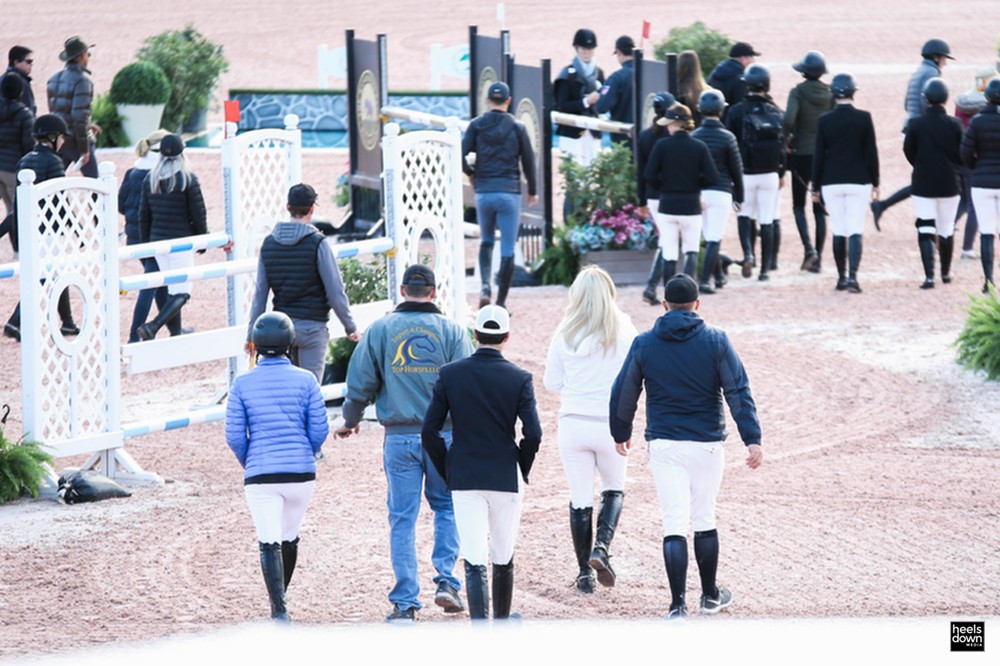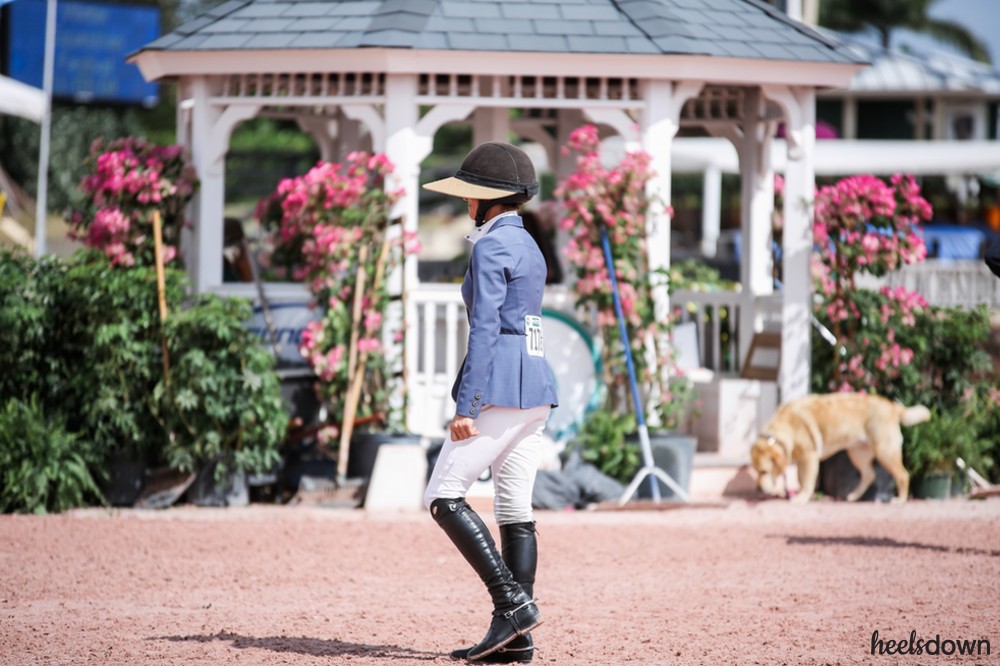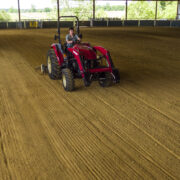The Ultimate Guide to Walking Your Course

By Samantha Cowan
Walking a jump course can be a confusing and daunting task if a rider doesn’t know what to look for while doing it. So Heels Down Mag reached out to an expert course walker to come up with the ultimate guide to walking a jump course. Allow us to break it down for you.
The Expert: Terri Brent is a top Canadian show jumping coach who has worked with professionals like Jill Henselwood, Candice King and Ian Millar. Having walked more Grand Prix courses than she can count, Terri explains the art of course walking, step by step.
1. When Your Course Is Posted
“The first thing I do [when the course is posted] is I look at the map and find where the start timers are. I follow the course on the map from a bird’s eye view on paper. Usually the course map is close to the in-gate, so I look at it from that position to see how it transcribes from paper to reality.”
2. Measure Lines and Walk Strides
There are a couple ways of doing this. The way that I like best is to actually measure the distance between jumps. This means that I take:
- Two steps from the jump on landing, each step being three feet in length (so six feet for landing).
- Then I count off four human three-foot steps for every one horse stride.
- I continue down the line and when I reach the next jump, there should be two steps left for take-off, or six feet on take-off.
That will tell you if the course designer has left you shy of the six-foot take-off or long for the the six-foot take-off. That information in turn will let you know what kind of distance the line is set at, whether it is generous and therefore maybe a little long, or whether there is not quite enough room and the line will ride short. Or, maybe it’s right on stride.

The other method you can use to determine the distance between jumps is to look at the jump behind you and estimate where the horse will land. This is usually the same distance as the height of the jump. Often the method of the six-foot landing, if they are small jumps that you’re jumping, is a little generous. So, you might want to use the landing and take-off technique and walk the distance in between to see exactly what the distance has been set at for the size of jump you are jumping.
3. Choosing Where to Make Your Turns
I always make the assumption that the time allowed is a factor. So, when I’m evaluating where to make turns, I make them so that they are fair for the horse yet efficient on the clock. If there’s something in the way and going around it will be a long way around making the time allowed difficult to achieve, that’s where I would say, ‘We should go inside here and take care of the time allowed.’
If it’s a very difficult test, for instance, a big combination or a very careful skinny jump, I may re-evaluate the approach and try to make up the time allowed somewhere else that is easier.
Keep in mind that when we compete, the course designer is testing us as riders and trainers and the horses as athletes, so they make questions that we need to answer. Questions with difficult distances, difficult time allowed, difficult visual effects of the jumps and difficult approaches where maybe you don’t get a straight line to a jump. All of that comes into play when I’m deciding about the time allowed and where to take care of it.
4. Deciding Where to Slow Down or Speed Up
One of the places where you can always speed up is when you know you have accomplished a task – a line or a combination – and you are at the end of the ring where there is not a test. There are no jumps and nothing in your way, which is a good place to allow your horse to gallop along a little and not organize too much. That helps to take care of time allowed and makes it easy for your horse because it is relaxing for them just to carry the gallop.
Then as you get closer to the next test that the course designer has put in play, depending on what that is, you’ll want to match your stride to what is coming up. In other words, if it’s a short combination and you’ve galloped along, you’re probably going to want to organize and take a little bit of forward momentum away from your horse to match their stride length to the task at hand.
If you decide to slow down in a careful or short situation, where you know that too much momentum can work against you, you might need to slow down a few strides out to have an organized jump. Keep in mind that every time you slow down you are going to have to make up the time somewhere else on course. Today’s show jumping is about galloping and jumping, so if you need to shorten you will likely need to make up for that somewhere else to stay under the time allowed.
5. How to Account for a Spooky Fence
If you know your horse is spooky at a liverpool, or water, or wall, evaluate when you can get into the ring and go over to that jump immediately to show your horse that jump [before you start your course]. Right off the bat, you’ve given yourself an edge because now your horse has seen what it is worried about.
The next thing that I would do is when I ride to it is I would make sure that I have pace into contact so I can make sure that if my horse goes left, goes right, backs off, or does anything that is not correct, I’m ready and can react accordingly.

If you believe the horse will still be spooky, you need to ride them a little bit more confidently, and here is the tricky part: without it being so much that you knock the jump down. That’s where the course designer has set that up, to find the horse that is spooky where the rider must override it and therefore faults at the jump because they have a flat horse or are unable to organize the distance properly.
6. How Many to Watch Ahead of You
This depends on the level of the class. If it is a Grand Prix, you have an educated rider watching other educated riders and what they get from watching is very useful. You are watching other riders solve questions in different ways. They may choose to change their mind from what they walked, but it’s not just by chance.
With novice riders, the interpretation of how other riders execute the course may differ. These riders should watch enough horses go to know their course. Listen to what your trainer has advised you on the best way to be successful on course and know that sometimes things go wrong and that’s OK. That’s part of show jumping and learning.
At that moment, pick the easiest method to get yourself out of trouble. Whether it is going forward or waiting, inside turn or going around. Whatever it is, know that a plan is only a plan and that they are living, breathing animals. At any time, they can mess up our plan and we are living, breathing animals that can also make mistakes and mess up our own plan.
That’s the beauty of our sport.


